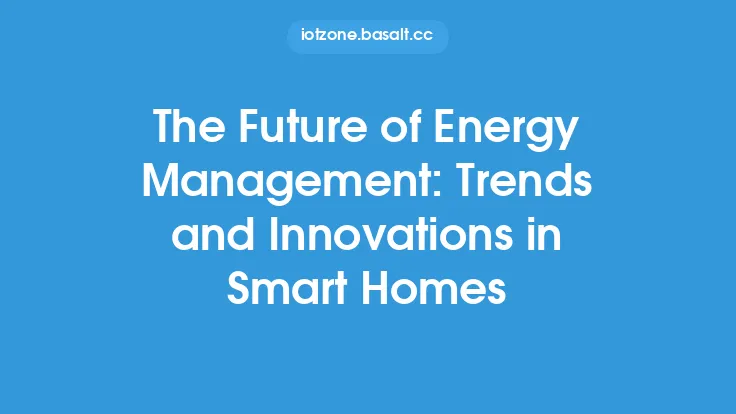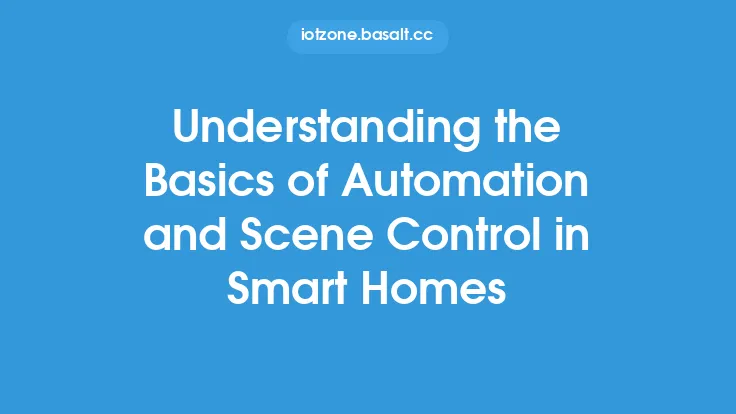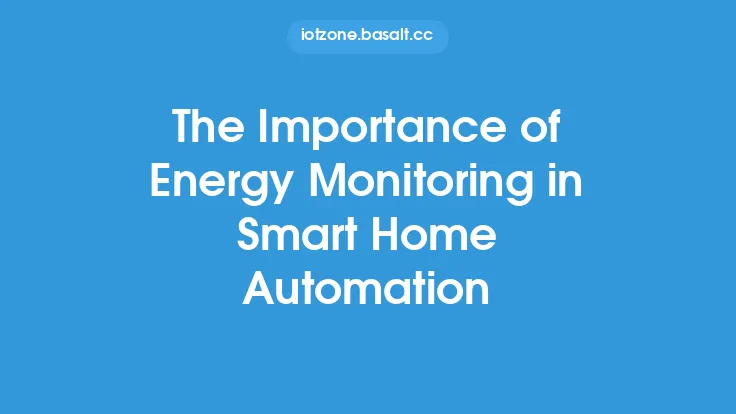The world of smart home automation has witnessed significant advancements in recent years, and one of the most notable developments is the emergence of smart lighting control systems. These innovative systems have revolutionized the way we interact with lighting in our homes, offering a wide range of benefits that extend far beyond mere energy savings. In this article, we will delve into the benefits of smart lighting, exploring the various advantages it offers and how it can enhance our daily lives.
What is Smart Lighting?
Smart lighting refers to the use of advanced technologies to control and manage lighting systems in a home or building. This can include features such as remote control, scheduling, and automation, as well as advanced sensors and data analytics. Smart lighting systems can be integrated with other smart home devices and systems, allowing for seamless control and coordination of various aspects of the home environment.
Energy Efficiency and Savings
One of the most significant benefits of smart lighting is its potential to reduce energy consumption and lower utility bills. By using advanced sensors and automation technologies, smart lighting systems can optimize lighting levels and usage patterns, minimizing waste and reducing energy consumption. For example, smart lighting systems can be programmed to turn off lights when a room is unoccupied or to adjust lighting levels based on natural daylight availability. This can lead to significant energy savings, with some studies suggesting that smart lighting can reduce energy consumption by up to 30%.
Enhanced Convenience and Control
Smart lighting systems also offer enhanced convenience and control, allowing users to manage their lighting from anywhere in the world using a smartphone or tablet. This can be particularly useful for people who are away from home for extended periods or who have mobility issues. With smart lighting, users can turn lights on and off, adjust brightness and color, and even schedule lighting scenes to create a welcoming atmosphere. Additionally, smart lighting systems can be integrated with voice assistants, such as Amazon Alexa or Google Home, allowing for hands-free control and added convenience.
Improved Safety and Security
Smart lighting can also play a significant role in improving home safety and security. By using advanced sensors and automation technologies, smart lighting systems can detect occupancy and adjust lighting levels accordingly, making it more difficult for intruders to approach the home undetected. Additionally, smart lighting systems can be programmed to simulate occupancy, making it appear as though someone is home even when the house is empty. This can be a powerful deterrent against potential intruders and can provide added peace of mind for homeowners.
Health and Wellbeing Benefits
Smart lighting can also have a positive impact on our health and wellbeing. By using advanced color temperature and brightness control, smart lighting systems can help regulate our circadian rhythms, improving sleep quality and reducing the risk of sleep disorders. Additionally, smart lighting can be used to create calming and relaxing environments, reducing stress and anxiety and promoting a sense of wellbeing. For example, smart lighting systems can be programmed to create a warm and cozy atmosphere in the evening, or to simulate a sunrise in the morning, helping to wake us up and start our day.
Technical Considerations
From a technical perspective, smart lighting systems can be complex and require careful consideration of various factors, including protocol compatibility, device interoperability, and network infrastructure. There are several protocols used in smart lighting, including Zigbee, Z-Wave, and Bluetooth, each with its own strengths and weaknesses. When selecting a smart lighting system, it is essential to consider the protocol used and ensure that it is compatible with other devices and systems in the home. Additionally, smart lighting systems require a reliable and stable network infrastructure, including a router and internet connection, to function effectively.
Installation and Maintenance
Installing and maintaining a smart lighting system can be relatively straightforward, but it does require some technical expertise. Most smart lighting systems come with a user-friendly interface and step-by-step instructions, making it easy to set up and configure the system. However, more complex systems may require professional installation, particularly if they involve integration with other smart home devices and systems. In terms of maintenance, smart lighting systems are generally low-maintenance, with most devices and systems requiring only occasional software updates and battery replacements.
Conclusion
In conclusion, smart lighting offers a wide range of benefits that extend far beyond mere energy savings. From enhanced convenience and control to improved safety and security, smart lighting can have a significant impact on our daily lives. By understanding the technical considerations and installation requirements, homeowners can make informed decisions about smart lighting and enjoy the many advantages it has to offer. Whether you are looking to reduce energy consumption, improve home safety, or simply enhance your overall living experience, smart lighting is definitely worth considering. With its advanced technologies and innovative features, smart lighting is poised to play an increasingly important role in the world of smart home automation, and its benefits are sure to be felt for years to come.





